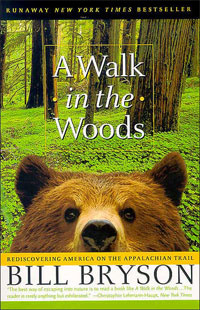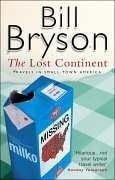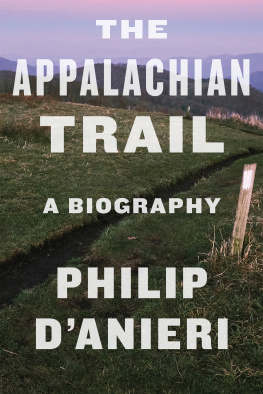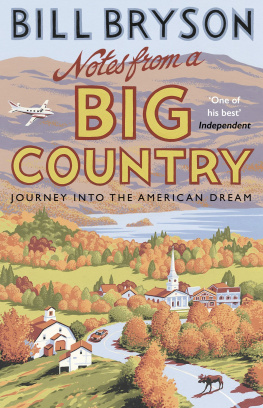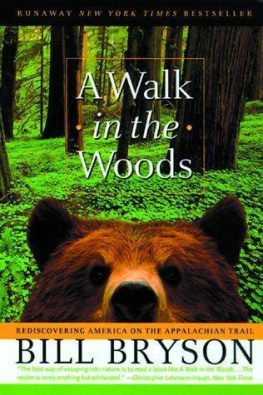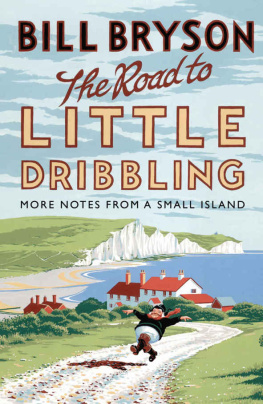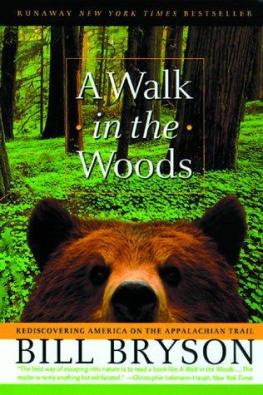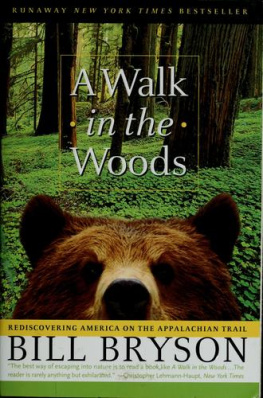Bryson - A walk in the woods: rediscovering America on the Appalachian Trail
Here you can read online Bryson - A walk in the woods: rediscovering America on the Appalachian Trail full text of the book (entire story) in english for free. Download pdf and epub, get meaning, cover and reviews about this ebook. City: New York;NY, year: 1998;2004, publisher: Broadway Books, genre: Detective and thriller. Description of the work, (preface) as well as reviews are available. Best literature library LitArk.com created for fans of good reading and offers a wide selection of genres:
Romance novel
Science fiction
Adventure
Detective
Science
History
Home and family
Prose
Art
Politics
Computer
Non-fiction
Religion
Business
Children
Humor
Choose a favorite category and find really read worthwhile books. Enjoy immersion in the world of imagination, feel the emotions of the characters or learn something new for yourself, make an fascinating discovery.
- Book:A walk in the woods: rediscovering America on the Appalachian Trail
- Author:
- Publisher:Broadway Books
- Genre:
- Year:1998;2004
- City:New York;NY
- Rating:4 / 5
- Favourites:Add to favourites
- Your mark:
A walk in the woods: rediscovering America on the Appalachian Trail: summary, description and annotation
We offer to read an annotation, description, summary or preface (depends on what the author of the book "A walk in the woods: rediscovering America on the Appalachian Trail" wrote himself). If you haven't found the necessary information about the book — write in the comments, we will try to find it.
Bill Bryson has made a living out of traveling and then writing about it. In The Lost Continent he re-created the road trips of his childhood; in Neither Here nor There he retraced the route he followed as a young backpacker traversing Europe. When this American transplant to Britain decided to return home, he made a farewell walking tour of the British countryside and produced Notes from a Small Island. Once back on American soil and safely settled in New Hampshire, Bryson once again hears the siren call of the open road--only this time its a trail. The Appalachian Trail, to be exact. In A Walk in the Woods Bill Bryson tackles what is, for him, an entirely new subject: the American wilderness. Accompanied only by his old college buddy Stephen Katz, Bryson starts out one March morning in north Georgia, intending to walk the entire 2,100 miles to trails end atop Maines Mount Katahdin.
If nothing else, A Walk in the Woods is proof positive that the journey is the destination. As Bryson and Katz haul their out-of-shape, middle-aged butts over hill and dale, the reader is treated to both a very funny personal memoir and a delightful chronicle of the trail, the people who created it, and the places it passes through. Whether you plan to make a trip like this one yourself one day or only care to read about it, A Walk in the Woods is a great way to spend an afternoon. --Alix Wilber
From Publishers WeeklyReturning to the U.S. after 20 years in England, Iowa native Bryson decided to reconnect with his mother country by hiking the length of the 2100-mile Appalachian Trail. Awed by merely the camping section of his local sporting goods store, he nevertheless plunges into the wilderness and emerges with a consistently comical account of a neophyte woodsman learning hard lessons about self-reliance. Bryson (The Lost Continent) carries himself in an irresistibly bewildered manner, accepting each new calamity with wonder and hilarity. He reviews the characters of the AT (as the trail is called), from a pack of incompetent Boy Scouts to a perpetually lost geezer named Chicken John. Most amusing is his cranky, crude and inestimable companion, Katz, a reformed substance abuser who once had single-handedly become, in effect, Iowas drug culture. The uneasy but always entertaining relationship between Bryson and Katz keeps their walk interesting, even during the flat stretches. Bryson completes the trail as planned, and he records the misadventure with insight and elegance. He is a popular author in Britain and his impeccably graceful and witty style deserves a large American audience as well.
Copyright 1998 Reed Business Information, Inc.
Bryson: author's other books
Who wrote A walk in the woods: rediscovering America on the Appalachian Trail? Find out the surname, the name of the author of the book and a list of all author's works by series.

